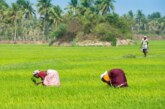Asia’s Water Problems
By Dr Arvind Kumar
Recent reports indicate that much of central China along the Yangtze River has been in the grip of a five-month drought that has dried up rivers, reducing hydroelectric generating capacity and leaving many people and large swaths of farmland short of water. Meanwhile, China’s total water reserves have fallen sharply since 2000. Over the next decade, water consumption is forecast to rise from nearly 600 billion cubic meters last year to 670 billion cubic meters in 2020. The World Policy Institute (WPI), a nonpartisan U.S.-based think-tank, says that the competition between water and energy needs is a critical economic, security and environmental issue that has not yet received the attention it merits.
Steven Solomon, author of Water: The Epic Struggle for Wealth, Power and Civilization, calculates that each day every person living in an industrialized nation consumes an average of four-plus tons of water. Of course, most of it is not direct. It is embedded in the food we eat, the products and high-tech gadgets we use, and the energy we need.
A study in 2010 by the World Resources Institute found that availability and quality of freshwater are rapidly declining in many parts of South and Southeast Asia due to population increase, rising demand and climate change. India, the second most populous nation after China, faces critical water shortages in the next decade. Malaysia, Thailand, the Philippines and Vietnam are expected to suffer localized water pollution and shortages, with climatic patterns shifting towards longer dry seasons with more concentrated bursts of rainfall and resultant flooding. Asia needs sustainable and well-integrated energy and water policies — sooner rather than later.



